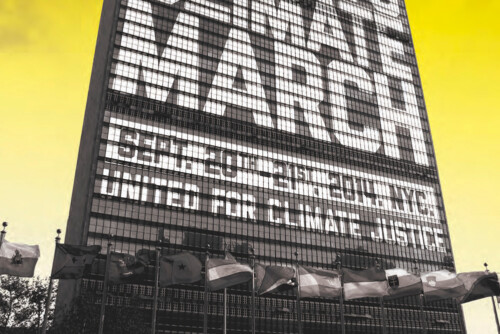The emergence of the American prison industrial complex since the 1970s has generally been addressed by academic scholars, progressive activists, and imprisoned intellectuals as a problem situated entirely within the domestic social formation of the U.S. Yet, even the concise definition of the prison industrial complex penned in 2001 by U.S. political prisoner1 Linda Evans (released in 2001) and activist Eve Goldberg foreshadows a praxis that reaches beyond the geographies of the U.S. national form: “Like the military/industrial complex, the prison industrial complex is an interweaving of private business and government interests. Its twofold purpose is profit and social control. Its public rationale is the fight against crime.”2 Working against the parochialism of conventional criminological approaches to conceptualizing the U.S. prison, Evans and Goldberg are defining an organic connection between the institutional architecture of the prison industrial complex and the globally generative forces of neoliberalism and globalization. For them, the socioeconomic transformations of neoliberal U.S. capital, alongside contemporary elaborations of the U.S. racist state in the post-Civil Rights moment, simultaneously a) fabricate populations vulnerable to criminalization (black, brown, poor, and generically redundant to the contemporary economic organization of the U.S.), b) withdraw or make obsolete state social services for people most in need of resources necessary to social and biological reproduction, c) militarize and juridically empower the policing and criminal justice apparatuses in unprecedented ways, and d) generate a dynamic statecraft, public discourse, and popular culture of policing and imprisonment that organize a grammar of social necessity and ideological consent around the emergence and expansion of the prison industrial complex.3 As the U.S. prison, jail, INS/Homeland Security detainee, extraterritorial military prison, and incarcerated youth population approaches and surpasses the 2.5 million mark (as of this writing), the quantitative evidence refracts the prison’s qualitative transformation into a fundamental organ of state reproduction and civic ordering.4
The globality of the U.S. prison regime thus places a peculiar political onus upon people who are committed to struggle for human liberation and freedom in the face of such overwhelming structures of dominance. In fact, a moment of radical political possibility might open through dense, locally situated, and consistently theorized articulations of the kinship of captivity that is shared by increasing numbers of people across the world who are variably touched by (and for that matter implicated in) the movements of American globality and its synthesis of mass-based human immobilization and acute bodily punishment. Further, a critical focal attention on and engagement with the mounting movement for social transformation through the abolition of the American prison, policing, and criminal justice systems—a struggle that has accumulated momentum and influence since the late-1990s—might similarly echo the legacies of the late-19th century U.S. abolitionist movement whose most revolutionary dreams—the decisive overthrow of slavery, white supremacy, U.S. apartheid, and normalized state terror—are still unfulfilled. It is ultimately this radical accountability to the living history of American globality and its unequalled capacity for violence that calls forward the most imaginative and daring praxis.
- For a general discussion of the conditions and context for the political imprisonment of progressive, radical, and revolutionary liberation activists in the late-20th century United States, see Owusu Yaki Yakubu, “Toward Collective Effort and Common Vision: The International and Domestic Contexts of the Struggles of Political Prisoners and Prisoners of War Held by the U.S.,” Can’t Jail the Spirit: Political Prisoners in the U.S. Chicago: Committee to End the Marion Lockdown, 2002, 13. [↩]
- Linda Evans and Eve Goldberg, The Prison Industrial Complex and the Global Economy. San Francisco: AK Press Distribution, 1998, 5. [↩]
- See generally Ruth Wilson Gilmore, Golden Gulag: Prisons, Surplus, Crisis, and Opposition in Globalizing California. Berkeley: University of California Press, 2007. Christian Parenti, Lockdown America: Police and Prisons in the Age of Crisis. New York: Verso, 2000. Ted Gest, Crime & Politics: Big Government’s Erratic Campaign for Law and Order. New York: Oxford University Press, 2001. And Julia Sudbury, Ed., Global Lockdown: Race, Gender, and the Prison-Industrial Complex. New York: Routledge, 2005. [↩]
-
The figure 2.5 million includes imprisoned populations that are almost always excluded from common carceral body counts. The most frequently quoted figures are from the United States Bureau of Justice Statistics. See, for example, Harrison and Karberg, “Prison and Jail Inmates at Midyear 2003,” U.S. Department of Justice, NCJ 203947, May 2004. According to the BJS, as of June 2003 there were 2,078,570 prisoners held in Federal or State prisons and local jails.
In addition, the U.S. Department of Justice’s Office of Juvenile Justice and Delinquency Prevention writes in its 2002 annual report that there were 108,931 children incarcerated as of 1999 “OJJDP Annual Report 2002,” NCJ 202038, 59). It is almost certain that the current population of imprisoned children exceeds this figure, especially since a growing number of youth under the age of 18 are being sent to adult jails and prisons (statistics on incarcerated populations typically have a 1-2 year lag, due to the time expended in collecting and calculating data). Finally, the Department of Homeland Security, which bureaucratically absorbed the older Immigration and Naturalization Service (INS), reports that in 2002, there were 188,547 non-citizens held in INS prisons on an average day (memorandum from Acting Inspector General Clark Kent Ervin, “Major Management Challenges Facing the Department of Homeland Security,” March 2003).
[↩]




